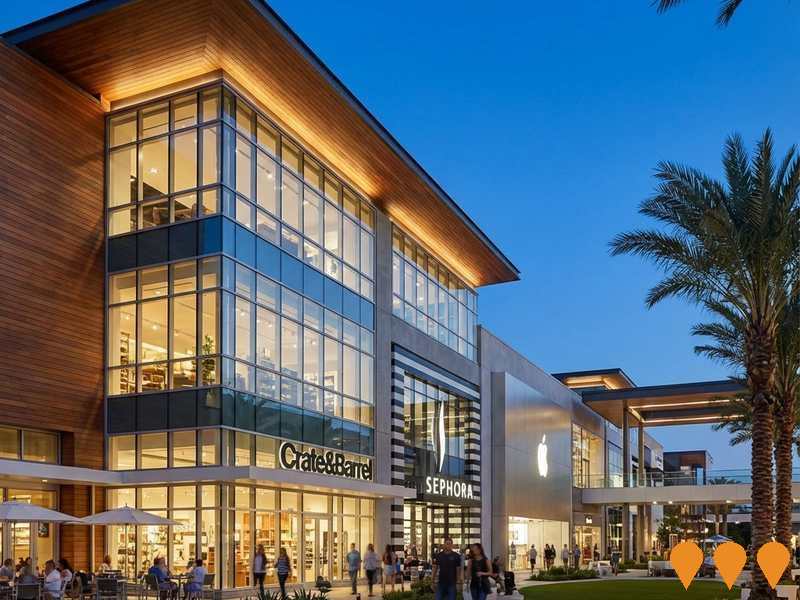Chart Color Schemes
est. as @ -- *
ABS ERP | -- people | --
2021 Census | -- people
Sales Activity
Curious about local property values? Filter the chart to assess the volume and appreciation (including resales) trends and regional comparisons, or scroll to the map below view this information at an individual property level.
Find a Recent Sale
Sales Detail
Population
Hamilton - Broadmeadow has seen population growth performance typically on par with national averages when looking at short and medium term trends
Hamilton - Broadmeadow's population is approximately 13,192 as of Aug 2025. This figure represents a growth of 420 people (3.3%) since the 2021 Census, which recorded a population of 12,772. The increase is inferred from ABS estimates of 13,162 in June 2024 and an additional 118 validated new addresses post-Census. This results in a density ratio of 1,954 persons per square kilometer, exceeding the average across national locations assessed by AreaSearch. The area's growth of 3.3% since Census places it within 1.5 percentage points of non-metro areas (4.8%), indicating competitive growth fundamentals. Overseas migration primarily drove population growth in recent periods.
AreaSearch uses ABS/Geoscience Australia projections for each SA2 area, released in 2024 with a base year of 2022. For uncovers areas, NSW State Government's SA2 level projections from 2022 (base year: 2021) are applied. Growth rates by age group are used for all areas from 2032 to 2041. Based on current demographic trends and latest population numbers, the area is expected to increase by approximately 1,488 persons to 2041, reflecting an overall increase of around 11.1% over the 17-year period.
Frequently Asked Questions - Population
Development
AreaSearch assessment of residential development activity positions Hamilton - Broadmeadow among the top 25% of areas assessed nationwide
Hamilton - Broadmeadow has recorded approximately 137 residential properties granted approval each year over the past five financial years, totalling 688 homes. As of FY26, three approvals have been recorded. Over these five years, an average of 0.8 people per dwelling built moved to the area annually. This suggests that new construction is matching or exceeding demand, providing more options for buyers and enabling population growth.
The average value of new properties constructed is $593,000, slightly above the regional average, indicating a focus on quality developments. In FY26, there have been $180.5 million in commercial approvals, demonstrating strong commercial development momentum. Compared to the rest of NSW, Hamilton - Broadmeadow shows 93.0% higher new home approvals per person. This results in greater choice for buyers. The majority of new building activity consists of townhouses or apartments (94.0%), with a smaller proportion being detached houses (6.0%). This shift towards higher-density living creates more affordable entry points and caters to downsizers, investors, and first-home buyers, marking a significant departure from the current housing pattern of 62.0% houses.
With approximately 482 people per approval, Hamilton - Broadmeadow indicates a mature market. Population forecasts suggest that Hamilton - Broadmeadow will gain around 1,458 residents by 2041. Given current construction levels, housing supply should adequately meet demand, creating favourable conditions for buyers and potentially enabling population growth that exceeds current forecasts.
Frequently Asked Questions - Development
Infrastructure
Hamilton - Broadmeadow has strong levels of nearby infrastructure activity, ranking in the top 30% nationally
Changes in local infrastructure significantly affect an area's performance. AreaSearch has identified 52 projects that could impact the region. Notable ones include Hunter Indoor Sports Centre, Parkway Avenue Roundabout Safety Improvements, Rail Bridge Row Affordable Housing Development, and Transport Oriented Development Area - Hamilton Station. The following list details those most likely to be relevant.
Professional plan users can use the search below to filter and access additional projects.
INFRASTRUCTURE SEARCH
 Denotes AI-based impression for illustrative purposes only, not to be taken as definitive under any circumstances. Please follow links and conduct other investigations from the project's source for actual imagery. Developers and project owners wishing us to use original imagery please Contact Us and we will do so.
Denotes AI-based impression for illustrative purposes only, not to be taken as definitive under any circumstances. Please follow links and conduct other investigations from the project's source for actual imagery. Developers and project owners wishing us to use original imagery please Contact Us and we will do so.
Frequently Asked Questions - Infrastructure
Hunter Indoor Sports Centre
A new 12-court indoor sports facility with a 2,500-seat show court, multi-purpose courts for basketball, netball, volleyball, futsal, pickleball, badminton and wheelchair sports, plus gym, health suites, cafe and extensive car parking. The centre will replace the ageing Newcastle Basketball Stadium and address the critical shortage of indoor sports venues in the Hunter region.
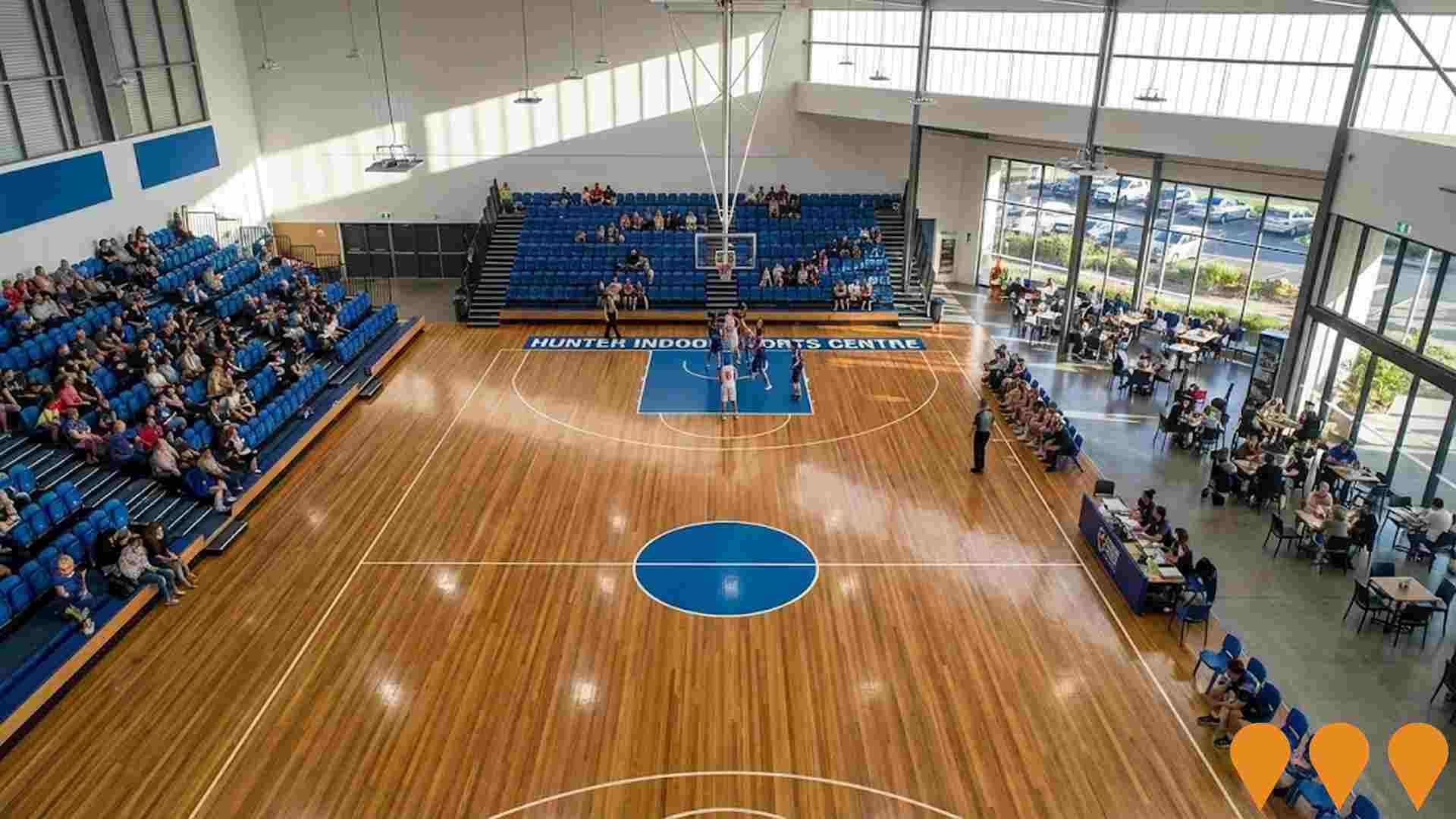
Newcastle Future Transit Corridor
A protected public transport corridor from Newcastle Interchange (Wickham) to the Broadmeadow precinct via Tudor and Belford streets. The corridor safeguards future rapid bus or light rail options, enhances walking and cycling connections, and supports the planned growth of Broadmeadow (up to 20,000 new homes and 15,000 new jobs). As of December 2025 the corridor alignment has been finalised, rezoning is progressing to legally protect the land, and detailed design, mode selection and construction timing remain subject to future funding and government decisions. Community consultation continues.
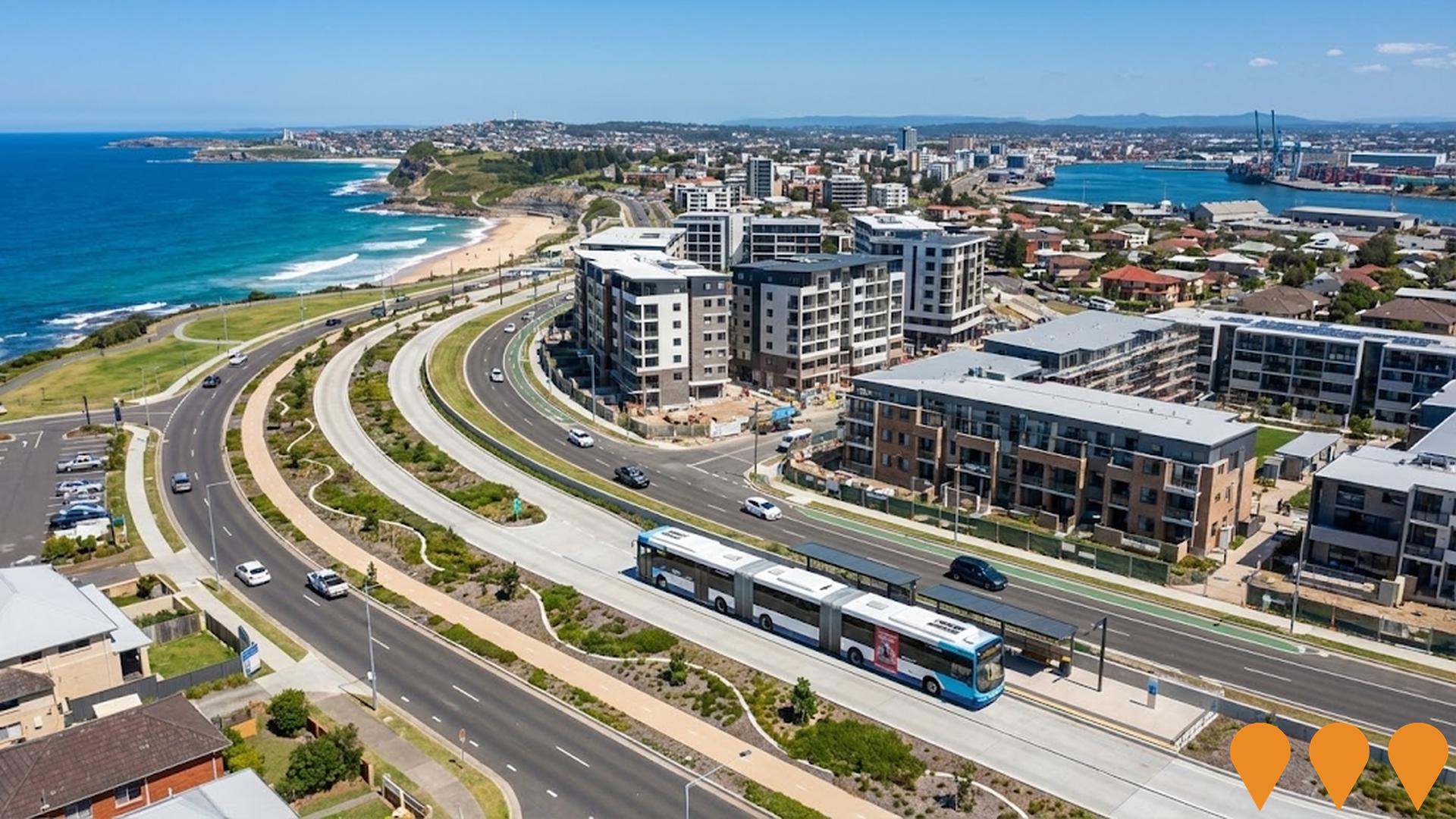
Newcastle Future Transit Corridor
Transport for NSW has confirmed the **Newcastle Future Transit Corridor** route, which will run between the Newcastle Interchange and the Broadmeadow precinct, primarily along Tudor Street. This corridor is being safeguarded to enable **future transport options**, such as light rail or rapid buses, supporting urban growth and projected housing and employment at Broadmeadow. The initial route segment closest to the Newcastle Interchange has been earmarked as the **Newcastle Future Infrastructure Corridor** to implement planning controls for its protection. A 2020 Strategic Business Case identified an extension from Newcastle Interchange to John Hunter Hospital via Broadmeadow as the most suitable long-term option, but noted bus solutions could precede light rail due to economic feasibility and to build patronage.

Transport Oriented Development Area - Hamilton Station
State-led planning reform allowing higher density residential development within 400 metres of Hamilton Station. The Transport Oriented Development planning controls commenced 13 May 2024, permitting residential flat buildings up to 22 metres (6 storeys) and shop top housing up to 24 metres with a maximum floor space ratio of 2.5:1. Development applications can now be lodged for residential flat buildings in residential and local centre zones, and shop top housing in commercial zones. All developments over 2,000 square metres gross floor area must include a mandatory 2% affordable housing contribution managed by registered community housing providers. Part of the broader NSW TOD Program aiming to deliver over 170,000 well-located homes near transport hubs across 37 stations over the next 15 years.

Hamilton South Social Housing Renewal
A renewal project for the Hamilton South public housing estate, led by Homes NSW (formerly NSW Land and Housing Corporation), with a focus on tenant-led improvements and potential redevelopment for a mix of social and private housing. The project is currently focused on critical maintenance, repairs, and a new tenant engagement initiative, including the formation of a Tenant Leadership Group in partnership with the Hunter Community Alliance, with $450,000 in funding allocated for this initiative over three years, starting mid-2025. The broader redevelopment of outdated properties on large blocks into modern townhouses is being considered, with a commitment to tenant inclusion and minimal disruption.

The Store Newcastle
A major redevelopment of the historic former Newcastle Co-Operative Store site into two luxury residential towers (28 and 30 storeys) comprising 352 apartments (1-4 bedrooms), ground-floor retail and commercial spaces, and one acre of resort-style amenities including swimming pool, tennis court, rooftop observation deck, private event spaces, and landscaped areas. Developed by Doma Group, the project sets a new benchmark for apartment living in Newcastle with premium finishes and unparalleled city, harbour, and beach views.
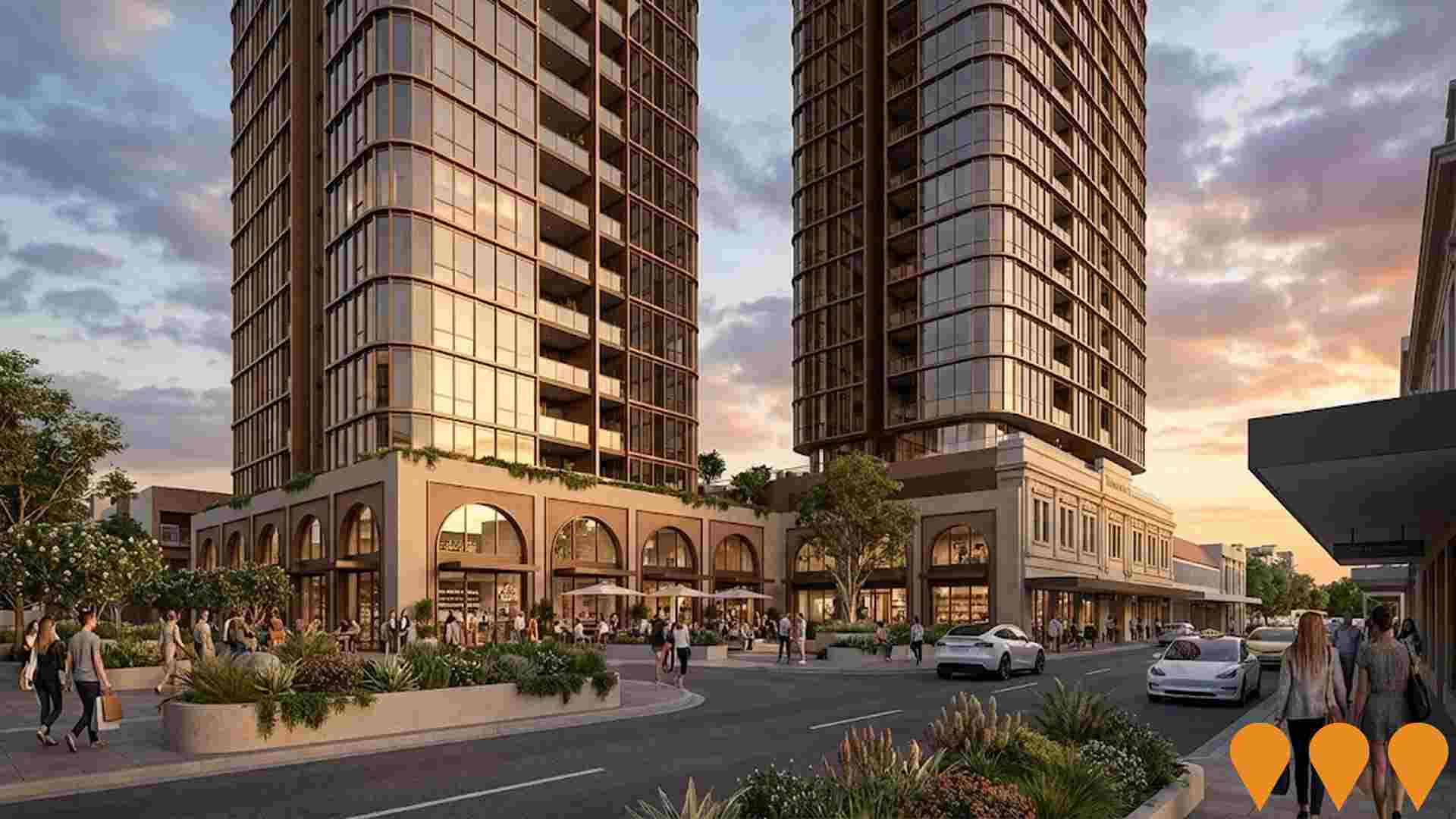
The Merewether Residences
A joint venture between ThirdAge and The Merewether Golf Club featuring 178 meticulously designed 1, 2, and 3-bedroom apartments with 16 exclusive penthouses across four 6-storey buildings. Over-55s luxury retirement community with resort-style amenities including wellness center, spa, pool, cinema, and clubhouse.
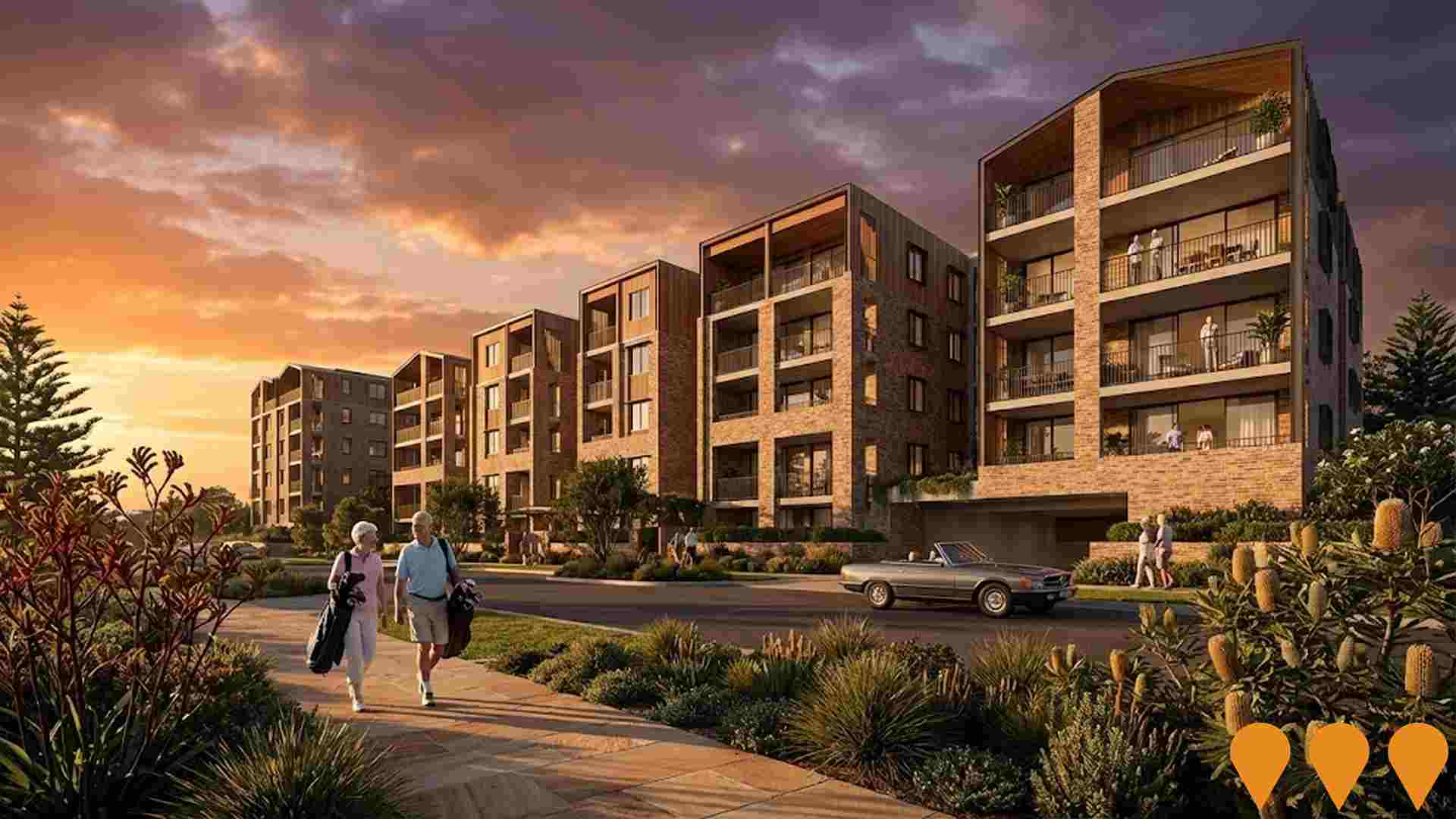
Gregson Park Masterplan
A 10-year masterplan adopted in November 2021 to guide the renewal of Gregson Park. Key short-term priorities include a new inclusive playspace and amenities upgrade, which was completed and delivered in October 2024. Long-term priorities, subject to budget, include a community shelter, multi-sports half court, resurfaced tennis courts, potential gardens/kiosk, and the planned demolition of a glasshouse in mid-2025.

Employment
Employment conditions in Hamilton - Broadmeadow remain below the national average according to AreaSearch analysis
Hamilton - Broadmeadow has a well-educated workforce with significant representation in essential services sectors. The unemployment rate was 4.2% as of an unspecified date.
Over the past year, there was an estimated employment growth of 2.2%. By June 2025, 7,468 residents were employed, with an unemployment rate of 4.7%, which is 1 percentage point higher than Rest of NSW's rate of 3.7%. Workforce participation in the area was 61.6% compared to Rest of NSW's 56.4%. Employment among residents is concentrated in health care & social assistance, education & training, and accommodation & food sectors.
The area has a strong specialization in professional & technical services, with an employment share that is 1.9 times the regional level. Conversely, agriculture, forestry & fishing shows lower representation at 0.3% versus the regional average of 5.3%. As of the Census, there are 1.1 workers for every resident, indicating that the area functions as an employment hub attracting workers from surrounding areas. Over the 12 months to June 2025, employment increased by 2.2%, while labour force increased by 2.5%, resulting in a rise in unemployment of 0.3 percentage points. In comparison, Rest of NSW recorded an employment decline of 0.1%, labour force growth of 0.3%, with unemployment rising 0.4 percentage points. Jobs and Skills Australia's national employment forecasts from May 2025 suggest that Hamilton - Broadmeadow's employment mix could grow by approximately 7.3% over five years and 14.8% over ten years, based on a simple weighting extrapolation for illustrative purposes.
Frequently Asked Questions - Employment
Income
The economic profile demonstrates above-average performance, with income metrics exceeding national benchmarks based on AreaSearch comparative assessment
Hamilton - Broadmeadow had a median income among taxpayers of $55,490 and an average level of $76,959 in the financial year 2022. These figures are significantly higher than national averages and compare to levels of $49,459 and $62,998 across Rest of NSW respectively. Based on Wage Price Index growth of 12.61% since financial year 2022, current estimates would be approximately $62,487 (median) and $86,664 (average) as of September 2025. According to the 2021 Census, personal income ranks at the 64th percentile ($877 weekly), while household income sits at the 46th percentile. The predominant income cohort spans 28.1% of locals (3,706 people) in the $1,500 - 2,999 category, consistent with broader trends across the region showing 29.9% in the same category. Housing affordability pressures are severe, with only 82.7% of income remaining after housing costs, ranking at the 45th percentile. The area's SEIFA income ranking places it in the 7th decile.
Frequently Asked Questions - Income
Housing
Hamilton - Broadmeadow displays a diverse mix of dwelling types, with above-average rates of outright home ownership
Hamilton - Broadmeadow's dwelling structure, as per the latest Census, consisted of 62.0% houses and 38.1% other dwellings (semi-detached, apartments, 'other' dwellings). This compares to Non-Metro NSW's 70.5% houses and 29.5% other dwellings. Home ownership in Hamilton - Broadmeadow was 31.4%, with mortgaged dwellings at 26.4% and rented ones at 42.2%. The median monthly mortgage repayment was $2,115, higher than Non-Metro NSW's average of $1,962. Median weekly rent in the area was $380, compared to Non-Metro NSW's $400. Nationally, Hamilton - Broadmeadow's mortgage repayments were significantly higher at $2,115 versus Australia's average of $1,863, while rents were also higher at $380 compared to the national figure of $375.
Frequently Asked Questions - Housing
Household Composition
Hamilton - Broadmeadow features high concentrations of group households and lone person households, with a lower-than-average median household size
Family households account for 56.8 percent of all households, including 22.2 percent couples with children, 23.7 percent couples without children, and 9.6 percent single parent families. Non-family households constitute the remaining 43.2 percent, with lone person households at 35.0 percent and group households comprising 8.2 percent of the total. The median household size is 2.2 people, which is smaller than the Rest of NSW average of 2.4.
Frequently Asked Questions - Households
Local Schools & Education
The educational profile of Hamilton - Broadmeadow exceeds national averages, with above-average qualification levels and academic performance metrics
Educational attainment in Hamilton-Broadmeadow is notably high, with 37.1% of residents aged 15 years and above holding university qualifications, compared to 21.3% in the rest of New South Wales (NSW) and 26.1% in the SA4 region. Bachelor degrees are most common at 24.9%, followed by postgraduate qualifications at 8.5% and graduate diplomas at 3.7%. Vocational credentials are also prevalent, with 30.4% of residents holding such qualifications, including advanced diplomas at 10.1% and certificates at 20.3%. Educational participation is high, with 30.6% of residents currently enrolled in formal education, comprising 9.8% in tertiary education, 8.5% in primary education, and 6.2% pursuing secondary education.
The area operates six schools educating approximately 3,586 students, with above-average socio-educational conditions (ICSEA: 1069). These schools include two primary, three secondary, and one K-12 school. Hamilton-Broadmeadow functions as an education hub with 27.2 school places per 100 residents, significantly above the regional average of 15.6, attracting students from surrounding communities.
Frequently Asked Questions - Education
Schools Detail
Nearby Services & Amenities
Transport
Transport servicing is high compared to other areas nationally based on assessment of service frequency, route connectivity and accessibility
Hamilton-Broadmeadow has 126 active public transport stops offering a mix of train, light rail, and bus services. These stops are served by 112 different routes, collectively providing 14,268 weekly passenger trips. Residential accessibility to transport is rated excellent, with residents typically located 137 meters from the nearest stop.
Service frequency averages 2,038 trips per day across all routes, equating to approximately 113 weekly trips per individual stop.
Frequently Asked Questions - Transport
Transport Stops Detail
Health
Health performance in Hamilton - Broadmeadow is lower than average with common health conditions somewhat prevalent across both younger and older age cohorts
Hamilton - Broadmeadow faces significant health challenges. Common health conditions are somewhat prevalent across both younger and older age cohorts.
The rate of private health cover is exceptionally high at approximately 58% of the total population (7624 people), compared to 55.6% across Rest of NSW. Mental health issues impact 11.6% of residents, while arthritis affects 8.7%. Approximately 63.7% of residents declare themselves completely clear of medical ailments, compared to 64.9% across Rest of NSW. The area has 19.3% of residents aged 65 and over (2550 people), which is higher than the 16.7% in Rest of NSW. Health outcomes among seniors present some challenges, broadly in line with the general population's health profile.
Frequently Asked Questions - Health
Cultural Diversity
Hamilton - Broadmeadow ranks below the Australian average when compared to other local markets across a number of language and cultural background related metrics
Hamilton-Broadmeadow has a lower-than-average cultural diversity, with 88.1% of its residents being Australian citizens and 83.9% born in Australia. A majority, 88.7%, speak English only at home. Christianity is the dominant religion, practised by 45.5% of the population.
While Judaism's representation is similar to the regional average (0.1%), there are notable disparities in other ethnic groups' representation: Welsh (0.9% vs 0.8%), Macedonian (1.1% vs 0.8%), and Greek (2.3% vs 0.8%) populations are higher than the Rest of NSW averages.
Frequently Asked Questions - Diversity
Age
Hamilton - Broadmeadow's population is slightly older than the national pattern
The median age in Hamilton - Broadmeadow is 39 years, which is significantly lower than Rest of NSW's average of 43 but essentially aligned with Australia's median age of 38 years. Compared to Rest of NSW, Hamilton - Broadmeadow has a higher proportion of residents aged 25-34 (16.6%) but fewer residents aged 5-14 (9.2%). According to the 2021 Census, the population aged 25 to 34 increased from 14.9% to 16.6%, while the proportion of those aged 55 to 64 decreased from 12.7% to 11.2%. By 2041, demographic projections indicate significant shifts in Hamilton - Broadmeadow's age structure. The 25-34 age group is expected to grow by 29%, reaching 2,834 people from the current figure of 2,193. Conversely, the population aged 5-14 and 65-74 are projected to decline.




